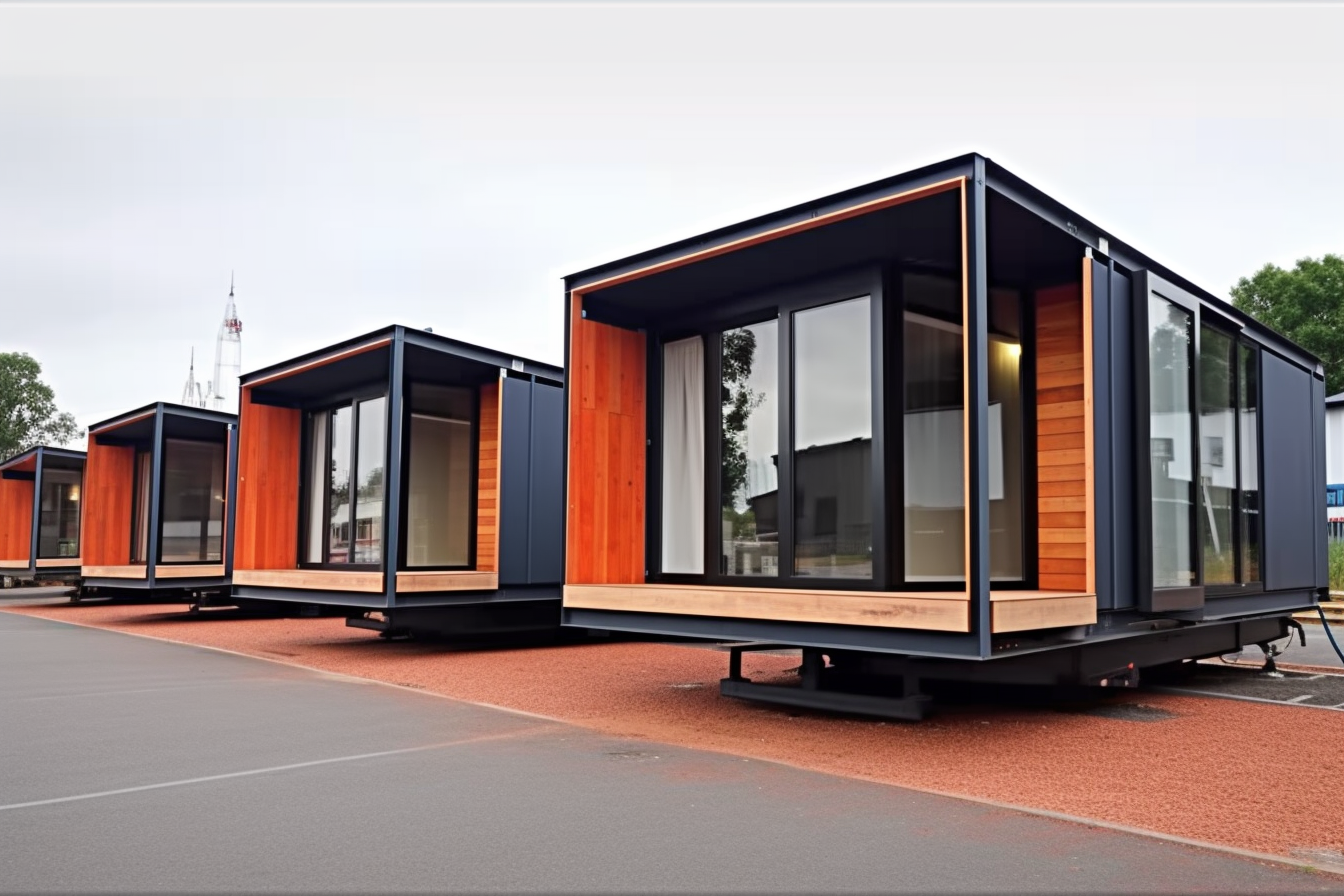Discover the Future of Living: Prefabricated Homes in 2025
As we approach 2025, the housing industry is undergoing a revolutionary transformation with the rise of prefabricated homes. These innovative dwellings are reshaping our understanding of modern living, offering a blend of efficiency, sustainability, and customization that traditional construction methods struggle to match. Prefabricated homes, also known as prefab or modular homes, are poised to become a cornerstone of residential architecture in the near future, addressing many of the challenges faced by the housing market today.

What are Prefabricated Homes and How Do They Work?
Prefabricated homes are residential structures manufactured off-site in a factory setting and then transported to their final location for assembly. Unlike traditional stick-built homes constructed entirely on-site, prefab homes are built in sections or modules under controlled conditions. These components are then shipped to the building site, where they are assembled like a giant puzzle, often in a matter of days rather than months.
The process typically begins with design and planning, followed by the manufacturing of individual components. These can include walls, floors, ceilings, and even entire rooms. Advanced technology, such as computer-aided design (CAD) and precision machinery, ensures that each piece is crafted to exact specifications. This level of precision not only improves quality but also minimizes waste and reduces construction time significantly.
Who Can Benefit from Prefabricated Homes?
Prefabricated homes cater to a wide range of individuals and situations, making them an attractive option for various demographics. First-time homebuyers often find prefab homes appealing due to their affordability and shorter construction timelines. The reduced build time means less financial strain from temporary housing or extended mortgage payments.
Environmentally conscious consumers are another group that can benefit greatly from prefab homes. The factory-controlled production process typically results in less waste and more efficient use of materials. Additionally, many prefab homes are designed with energy efficiency in mind, incorporating features like superior insulation and smart home technologies.
Retirees and downsizers may find prefab homes particularly suitable. The ability to customize layouts and features allows for the creation of age-friendly designs that can accommodate changing needs over time. Moreover, the reduced maintenance often associated with newer, more efficient homes can be especially attractive to this demographic.
How Are Prefabricated Homes Installed?
The installation of prefabricated homes is a carefully orchestrated process that begins long before the modules arrive at the building site. First, the foundation is prepared, which can be a traditional concrete slab, crawl space, or basement, depending on the design and local regulations.
Once the foundation is ready, the prefabricated sections are transported to the site on specialized trucks. A crane is typically used to lift and place each module onto the foundation. Skilled workers then connect the modules, ensuring proper alignment and sealing between sections. This process can often be completed in a matter of days, significantly reducing on-site construction time compared to traditional building methods.
After the main structure is in place, finishing work begins. This includes connecting utilities, installing any remaining fixtures, and completing interior and exterior finishes. While much of the work is done in the factory, this final on-site phase ensures that the home is fully integrated with its new environment and ready for occupancy.
Advantages of Prefabricated Homes
Prefabricated homes offer numerous advantages over traditional construction methods. One of the most significant benefits is the reduced construction time. While a conventional home might take months to build, a prefab home can often be ready for occupancy in a matter of weeks, reducing labor costs and minimizing disruption to the surrounding area.
Quality control is another major advantage. Factory-based construction allows for precise measurements and controlled conditions, resulting in consistently high-quality components. This controlled environment also means that materials are protected from weather-related damage during the building process, potentially extending the life of the structure.
Sustainability is a key feature of many prefab homes. The factory setting allows for more efficient use of materials, reducing waste. Additionally, many prefab designs incorporate energy-efficient features and sustainable materials as standard, contributing to lower energy costs and a reduced environmental impact over the life of the home.
Customization, contrary to popular belief, is a strong suit of prefabricated homes. Modern manufacturing techniques allow for a high degree of personalization, enabling homeowners to choose from a wide range of designs, finishes, and features to create a home that truly reflects their style and needs.
Estimated Costs of Prefabricated Homes
The cost of prefabricated homes can vary widely depending on factors such as size, design complexity, and location. However, in many cases, prefab homes can offer significant cost savings compared to traditional construction methods. Here’s a general overview of estimated costs for different types of prefabricated homes:
| Type of Prefab Home | Estimated Cost Range (USD) | Key Features |
|---|---|---|
| Tiny Prefab Homes | $30,000 - $60,000 | Compact, mobile, eco-friendly |
| Modular Homes | $100,000 - $300,000 | Customizable, quick assembly |
| Luxury Prefab Homes | $300,000 - $1,000,000+ | High-end finishes, larger sizes |
Prices, rates, or cost estimates mentioned in this article are based on the latest available information but may change over time. Independent research is advised before making financial decisions.
It’s important to note that these costs typically include the structure itself but may not cover land acquisition, site preparation, or utility connections. Additionally, transportation costs can significantly impact the final price, especially for remote locations.
Despite the initial costs, many homeowners find that prefab homes offer long-term savings through energy efficiency and reduced maintenance needs. As technology advances and prefab construction becomes more mainstream, it’s likely that costs will continue to become more competitive with traditional building methods.
In conclusion, prefabricated homes represent a compelling vision for the future of residential construction. As we look towards 2025, these innovative dwellings offer a unique combination of efficiency, sustainability, and customization that aligns well with the evolving needs of modern homeowners. While challenges remain, such as zoning regulations and public perception, the advantages of prefab homes are clear. From faster construction times to improved quality control and environmental benefits, prefabricated homes are poised to play a significant role in shaping the communities of tomorrow.




